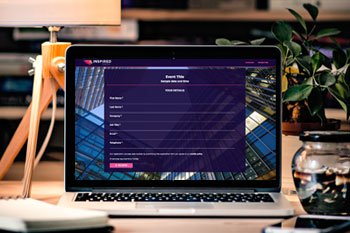So, your team has decided to run webinars. Confidence is high since you know the webinar success rates for lead generation, knowledge sharing, and content marketing.
In the meeting everyone is really enthused, it’s only when you get back to your desk that doubt rears its ugly head.
Where do you even start? How is it all going to work?
Don’t worry, we’ve all been there. The good news is that with this handy guide your webinars can be a risk-free experience that you’ll be glad to repeat, yes you read that right!
1. Choose Your Webinar Topic:
Perhaps the biggest of all webinar worries is content.
But you’re not alone, 60% of B2B content marketers stated that producing engaging content is their biggest challenge. Picking the perfect topic for your webinar can seem daunting at first, but take a step back and you’ll see that you probably already have a great topic waiting in the wings.
Start by mining your existing content for gold. Did you just finish a popular blog series? Could you combine and expand what you wrote into a webinar? Yes? Great! One worry down.
If you find that it’s not quite that easy to pick a great webinar topic, ask yourself a few questions:
- “Who are we trying to appeal to?”
- “What are we about as a company and how can we get that across?”
- "What do we want to achieve with this particular webinar?"
- "How can we help/educate our audience?"
Questions like these help to get the creative juices flowing and highlight your most important goals. If you know who your target audience is (existing or new customers for, example) you can start developing ideas that will appeal to them. Once you’re armed with these goals, check out a few of the most common inquiries your sales team has received, you might be surprised at the inspiration they can offer.
2. Prep & Plan:
“He who is best prepared can best serve his moment of inspiration”- Samuel Taylor Coleridge.
Once you’ve got your topic covered, actually creating the content is probably your next concern. There’s a little more to running a successful webinar than firing up ol’ reliable- PowerPoint and making a slide deck, especially if your webinar platform doesn’t support slide transitions or other animations.
Even the best writers don’t write blind, but with some good preparation and planning you can ensure your event goes without a hitch.
Creating clear deadlines can help the development of your event as the “go-live” date draws near. This is especially important if you are collaborating with other departments within your company or even other companies and speakers.
Make sure you have set dates for final content drafts and arrange times to run through proceedings with guest presenters. If your platform offers a contributor function this can be especially helpful as it enables you to lock access to all but the relevant areas of the event creation process.
Effectively, this makes sure that your webinar can’t accidentally be deleted whilst also allowing you to safely allocate tasks to others.

3. If in Doubt…Pre-Record:
If the thought of presenting a live webinar fills you with dread, maybe it’s time to consider pre-recording.
A common misconception is that webinars are all live, all the time, however, this isn’t the case at all. Whilst you’ll probably find it useful to incorporate some elements of live broadcast (such as a Q&A session), it is possible to pre-record the bulk of your webinar beforehand.
That means no sleepless nights worrying about what you’re going to say, or if it’s all going to go right and no stage fright when your webinar goes live. With a pre-recorded webinar, you have plenty of time to check the sound quality, edit any mistakes and create a webinar you’re proud of.
You don’t even need fancy equipment and a sound booth. PowerPoint has a feature that allows you to record your slide show, with any animations and embedded videos, alongside your voice over. That means you can pre-record your webinar presentation at home on the sofa, although maybe not with a glass of wine in hand.
Ernest Hemingway may have advocated writing drunk and editing sober, but I don’t think he had business webinars in mind when he said it!
4. Build It and They Will Come
Ok, we all know there’s no point creating a great webinar if no one but your gran turns up to it. Especially if your main focus is lead generation. Never fear though, if you build it they will come…and by it I mean a marketing plan.
It’s important to set targets from the beginning. How many leads do you expect? 10, 20, 1000? If you have an idea of what success looks like to your company, you’ll have an easier time qualifying it.
Next, factor in how much marketing time you need; we recommend at least three weeks pre-event. Finally, how will you attract leads; email, LinkedIn, Twitter? They all require different approaches, so think which fits your company best.
*Remember* Registration ≠ Attendees. Average attendance for a lead generation webinar is around 40% of registrants so bear this in mind when you’re setting lead targets.
5. What happens if it all goes wrong?!
We all worry about what ifs but, if you’ve followed all the other points in this blog, you’ve really got nothing to worry about.
Sure, you could still be a victim of a worldwide power cut, but it’s unlikely.
Check how your webinar provider distributes your webinar. At WorkCast, for example, we video stream your webinar through the cloud. This means that even if your office is struck by lightning your webinar will still go live.
At the end of the day, if you still feel like there’s too much to worry about, consider a managed event. That way, all the technical details will be handled by an experienced event manager, leaving you to rest easy.
Share this
You May Also Like
These Related Stories

10 Things You May Not Have Known About Webinars

Why Do Webinars Fail?


